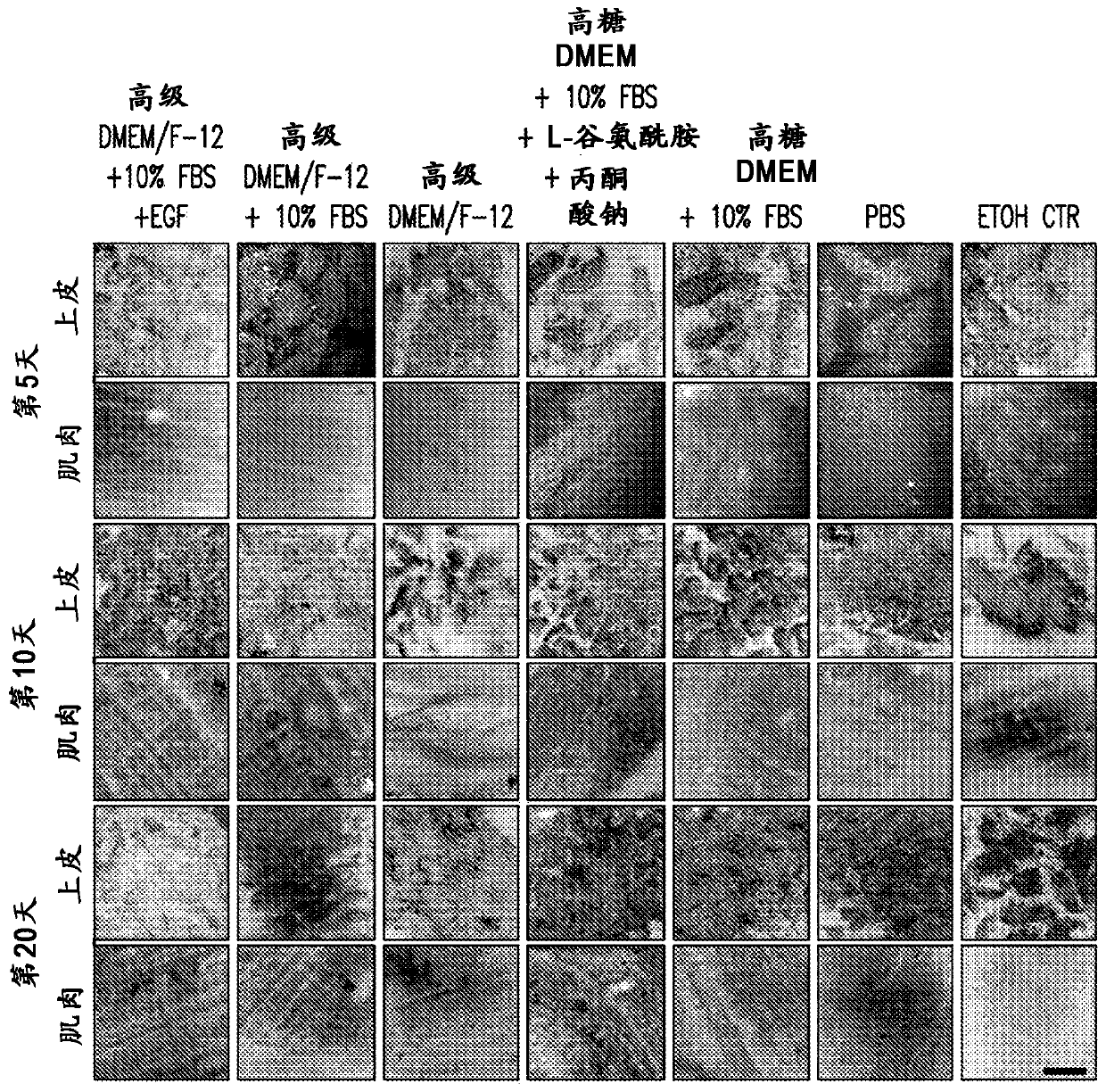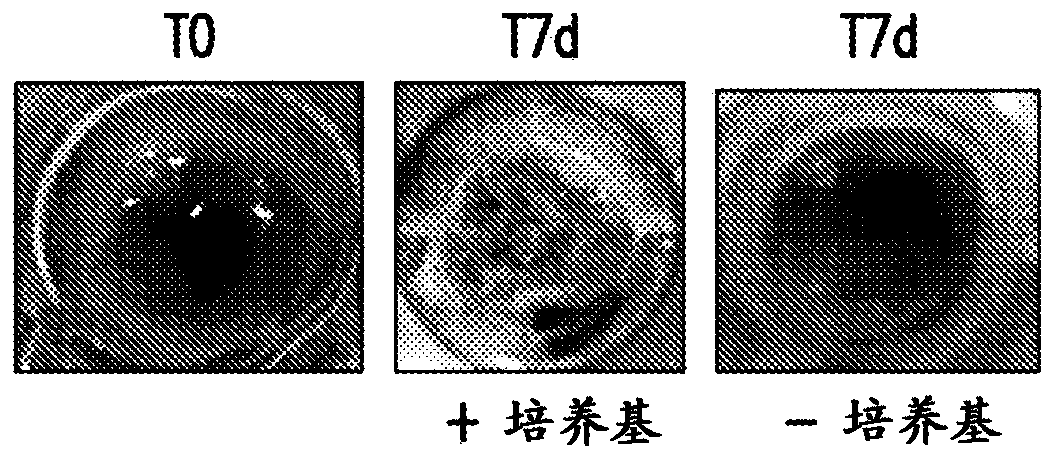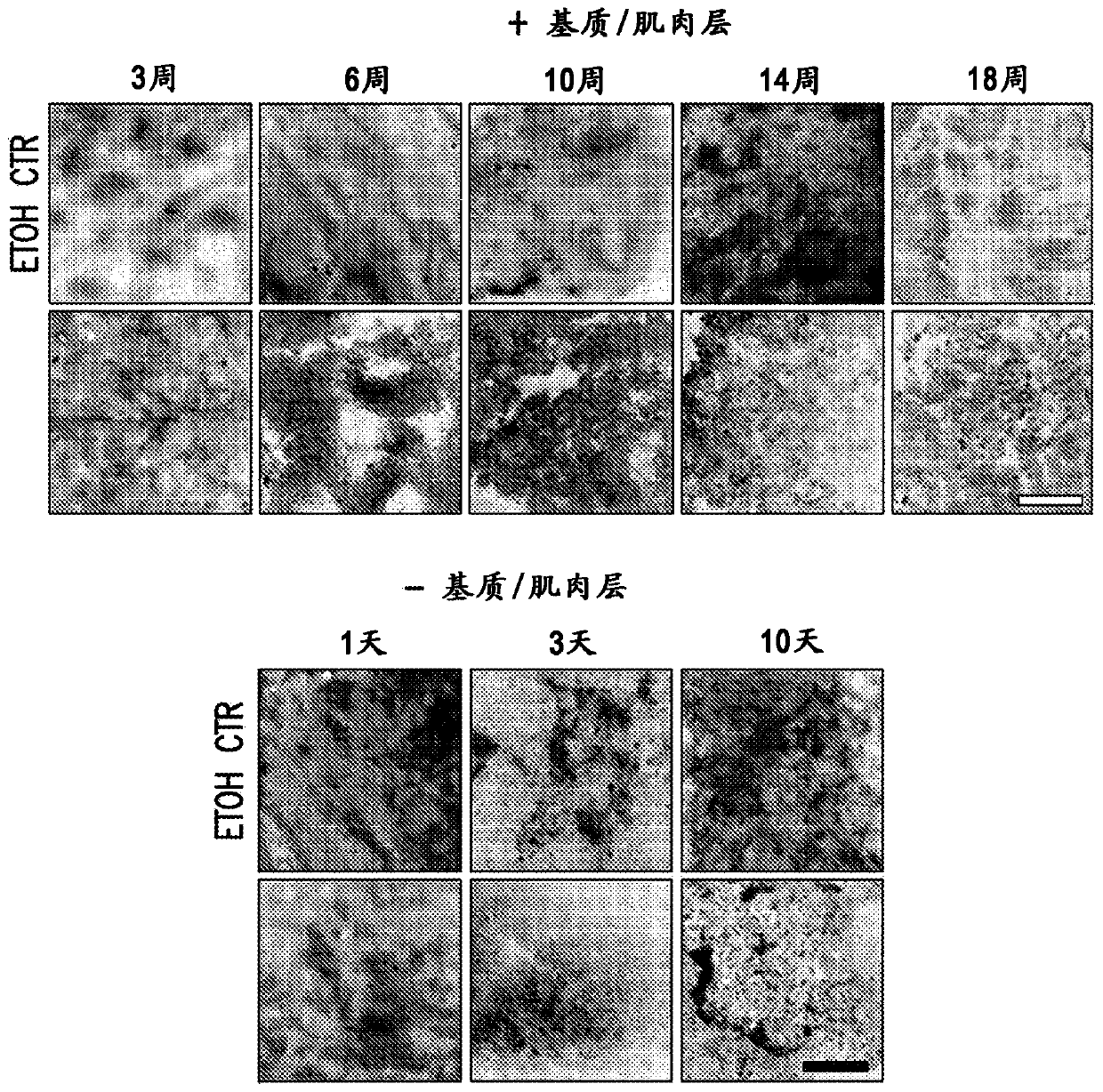Macro tissue explant, methods and uses therefor
An explant and tissue technology, applied in tissue culture, tissue screening, biochemical equipment and methods, etc., can solve the problems that the system cannot fully reproduce tissue structure and function, high-throughput system incompatibility, etc.
- Summary
- Abstract
- Description
- Claims
- Application Information
AI Technical Summary
Problems solved by technology
Method used
Image
Examples
Embodiment 1
[0565] Embodiment 1: In vitro culture system of intestinal tissue
[0566] To determine whether intestinal tissue can be cultured in a manner that preserves viability and in vivo structure, small intestinal tissue was isolated from freshly obtained intact gastrointestinal tracts of pigs. The viability of intestinal tissue explants was found to depend on the specific medium composition ( Figure 1A ). No difference in viability was observed between tissues cultured in DMEM F12 alone and in DMEM F12 supplemented with FBS or EGF. in addition, Figure 1B Photographs showing the luminal side of small intestinal tissue explants cultured with and without medium after 7 days, showing that the explants survived best with medium. found that stroma is essential for maintaining the survival of intestinal epithelial cells in vitro ( Figure 1C ). For sliced intestinal tissue explants (with Dapi (blue, nucleus), phalloidin (green, F-actin), wheat germ agglutinin (plasma membrane, red...
Embodiment 2
[0575] Example 2: Intestinal tissue explant platform development
[0576] Next, the use of the intestinal tissue explants of Example 1 in a high-throughput platform was investigated. An interface platform for intestinal tissue explant culture is designed, which enables high-throughput measurement of intestinal drug perfusion combined with long-term tissue culture capabilities. Specifically, a wide range of different designs and materials for potential interface systems are systematically evaluated. like Figure 2A As shown, a system was developed that enables low sample variability, preservation of tissue viability, rapid assembly, and compatibility with robotic handling. The design consists of an upper apparatus that compartmentalizes intestinal tissue in the form of a 96-well plate. The tissue forms the bottom of the multi-well plate and is sealed around each of the 96 wells by using an attachment underneath the tissue. The system is enclosed by an enclosure that regulat...
Embodiment 3
[0585] Example 3: Validation of Intestinal Absorption of Intestinal Tissue Explant System
[0586]The Food and Drug Administration (FDA) recommends the use of drugs approved for oral administration with human clinical pharmacokinetic data to verify the in vivo predictability of the in vitro intestinal perfusion system (Waiver of In Vivo Bioavailability and Bioequivalence Studies for Immediate-Release Sold Oral Dosage Forms Based on a Biopharmaceutics Classification System, U.S. Dep. Heal. Hum. Serv. Food drug Adm. Cent. Drug Eval. Res., 2000). Therefore, to confirm the use of intestinal tissue explants as a system for predicting intestinal absorption, the perfusion of 60 model drugs was analyzed. Specifically, drugs from 4 Biopharmaceutical Classification System (BCS) classes (16 BCS class I, 13 BCS class II, 15 BCS class III, and 12 BCS class IV) and 4 dextran-based drugs were used. Sugar control substance. Based on previously published data, intestinal perfusion data obtai...
PUM
| Property | Measurement | Unit |
|---|---|---|
| length | aaaaa | aaaaa |
| width | aaaaa | aaaaa |
| width | aaaaa | aaaaa |
Abstract
Description
Claims
Application Information
 Login to View More
Login to View More - R&D
- Intellectual Property
- Life Sciences
- Materials
- Tech Scout
- Unparalleled Data Quality
- Higher Quality Content
- 60% Fewer Hallucinations
Browse by: Latest US Patents, China's latest patents, Technical Efficacy Thesaurus, Application Domain, Technology Topic, Popular Technical Reports.
© 2025 PatSnap. All rights reserved.Legal|Privacy policy|Modern Slavery Act Transparency Statement|Sitemap|About US| Contact US: help@patsnap.com



